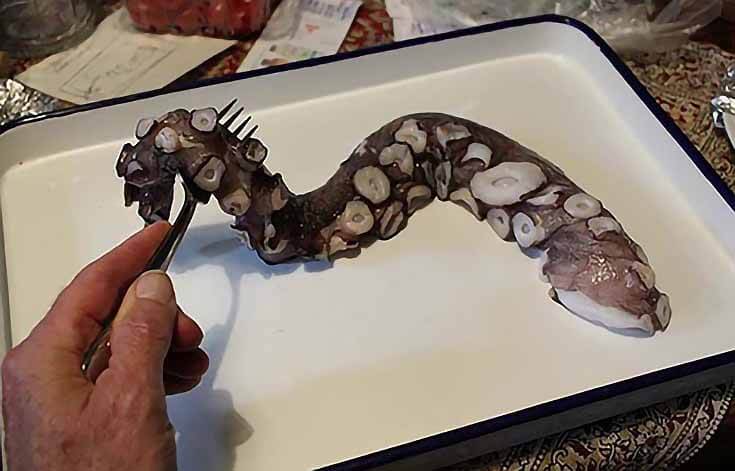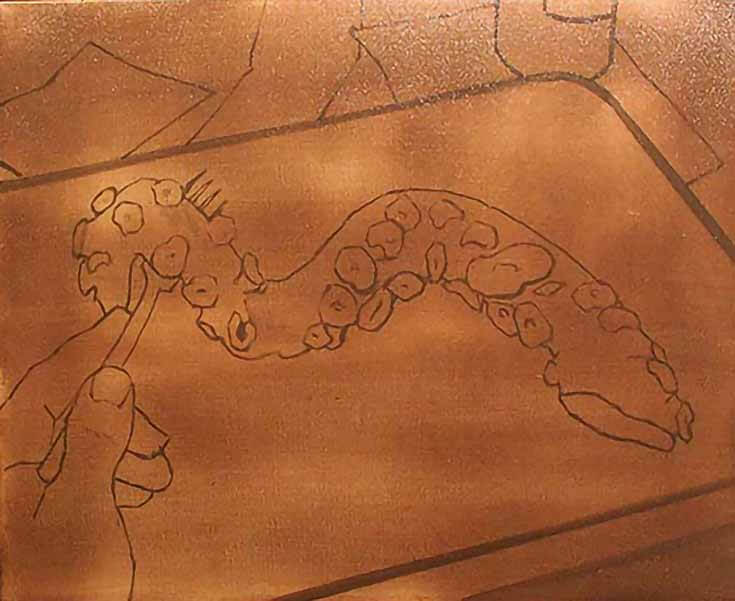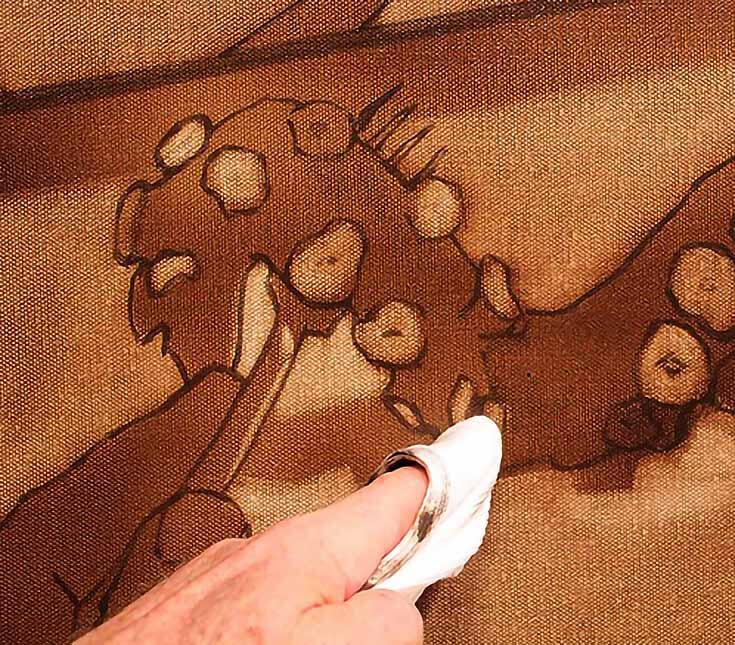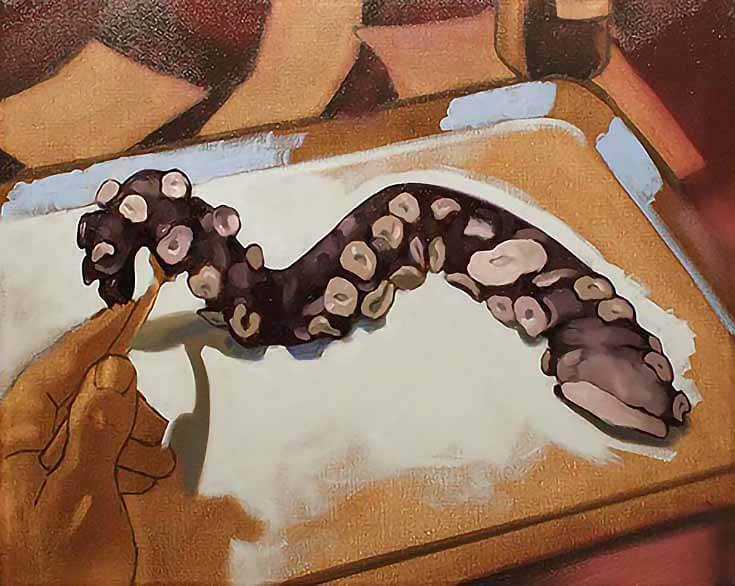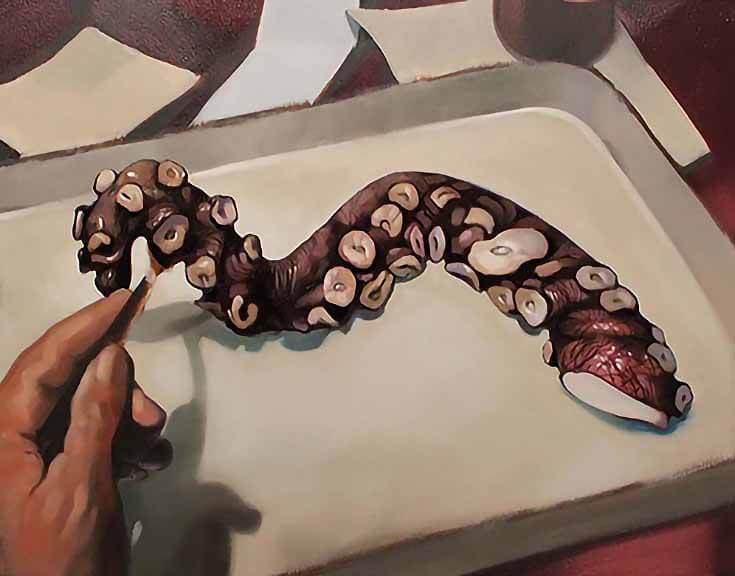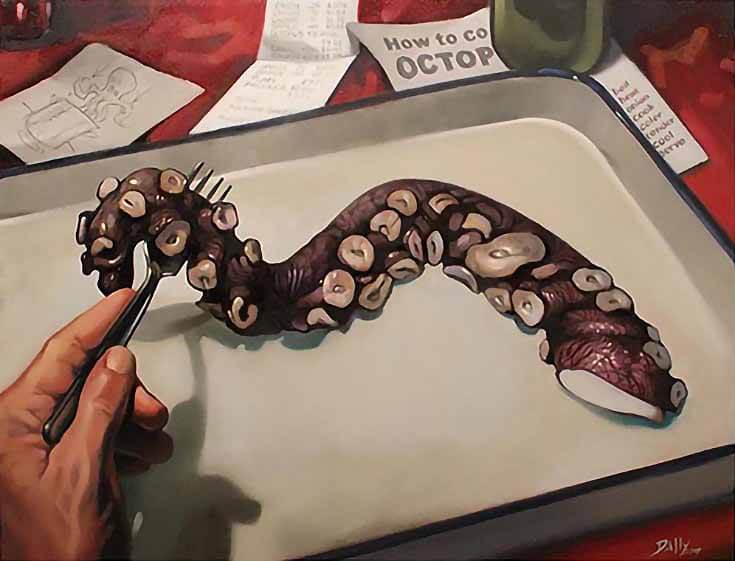In late 2017, The Society of Illustrators in New York featured an open-call for their members to create artwork on the subject of “Food” for an exhibition.
At first I drew a blank on what to do. Food is such a broad subject. Then one evening I was preparing an octopus tentacle for dinner, and dangling at the end of my fork was the perfect subject!
I grabbed my camera and snapped this photo to base the painting on:
I started by putting the main objects down on the white canvas, drawing them first in light charcoal and then going over the lines again with a mixture of diluted Raw Umber and Ivory Black oil paint:
Once my underdrawing had dried, I covered it with a coat of quick-drying formula I use (Galkyd 2/5, Drying Linseed Oil 2/5, Gamsol Odorless Mineral Spirits 1/5) rubbed on with a rag. Then I immediately worked the whole painting over with a semi-transparent coat of Raw Umber.
The Raw Umber is applied with a painting knife and smoothed over with a broad soft 3-inch wide flat-ended brush, leaving this result:
You’ll find that you do have to work rather quickly with this process, as the quick-drying formula really works!
Once the canvas was evenly covered, I began to wipe-out the highlights and lightest areas with another soft, clean rag. Mid-tones and shadows are reinforced by going back in with the broad flat brush and smoothing things out. The Raw Umber coating will begin to dry within two hours so it’s best to establish the main detail of the painting within that timeframe.
Below you can see the completed wipe-out underpainting. . . all colors and shadows will be applied over this underpainting:
Once the underpainting is dry (give it a day or two) I always go in and block-in the painting’s color scheme. This is where the work can come to life or look like it’s going to completely bomb!
With the painting well underway, I was able to start adding in some details (the fun parts!) The tentacle, for example, is finished below, with an attempt to capture that all-important “Ickkk factor.”
Note that the hand above is not finished and you can see the skin undertones rendered over the brown underpainting. After some additional work, here is the finished painting:
Bon Appetit!
Special thanks to Lyman Dally for sharing this oil painting walkthrough! To learn more about Lyman or see his other paintings, please visit his website at oentourage.com.
This post may contain affiliate links.
